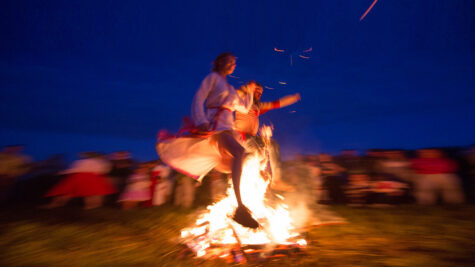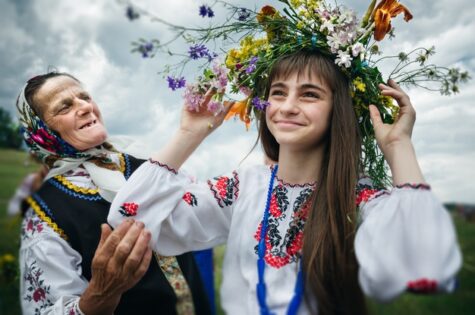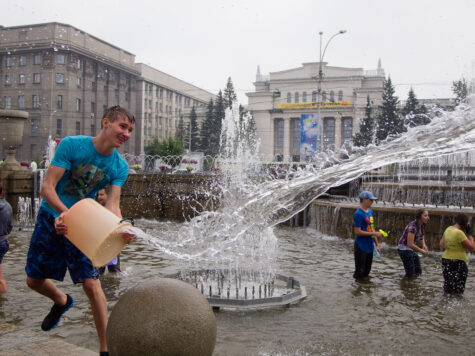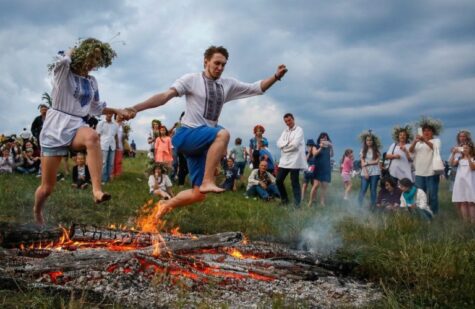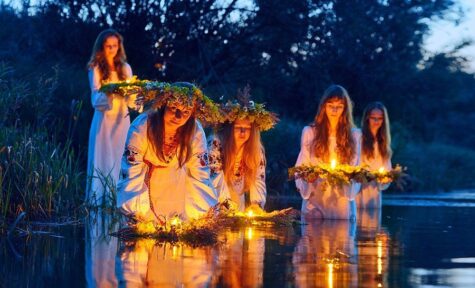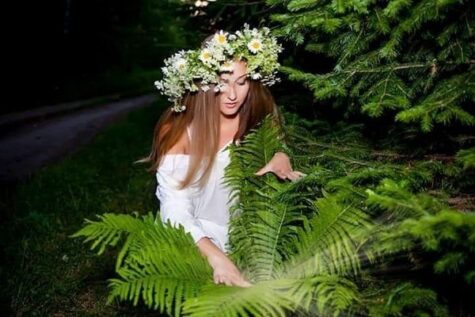Daily Archives: July 6, 2021
Kupala Night and Ivan Kupala Day is celebrated in Ukraine, Poland, Belarus and Russia from the night of July 6 to the day of July 7 on the Gregorian calendar. This corresponds to June 23 to 24 on the traditional Julian calendar.
The celebration is linked with the summer solstice when nights are the shortest and includes a number of Slavic rituals. This holiday symbolizes the birth of the summer sun – Kupalo.
In the fourth century AD, this day was Christianized and proclaimed the holiday of the birth of John the Baptist. As a result, the pagan feast day “Kupala” was connected with the Christian “Ivan” (Russian for John) which is why the Ukrainian, Belarusian and Russian name of this holiday combines “Ivan” and Kupala which is derived from the Slavic word for bathing.
The two feasts could be connected by reinterpreting John’s baptizing people through full immersion in water. However, the tradition of Kupala predates Christianity. The pagan celebration was adapted and reestablished as one of the native Christian traditions intertwined with local folklore.
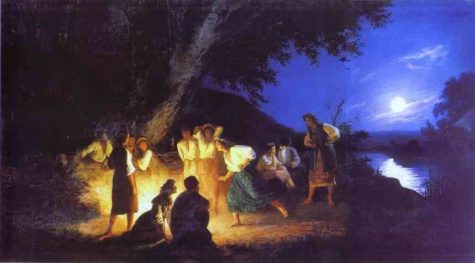
And Then It Was Banned
In the XVIII century, there were a number of documents testifying to the fierce struggle of the Church and secular authorities with the Kupala rite.
For example, in 1719 Hetman of Zaporizhzhia Army, Chairman of the Cossack state of the left bank of Ukraine, Ivan Skoropadskyi issued a decree “On parties, fisticuffs, gatherings on the holiday of Ivan Kupala etc.”, which granted the right to physically punish (tie up and beat with sticks) and excommunicate from the Church all participants of Kupala games.
In 1723, Przemysl Cathedral in Bereziv banned dancing and entertainment near the Kupala fire. In 1769, Catherine II issued a decree banning the holiday. And despite all the prohibitions, the pagan nature of folk rituals was strong. The church did not ban the holiday, but it did try to fill it with Christian content.
It is the pagan essence, mysticism, marriage-erotic motifs of Kupala rite that attracted the attention of many researchers and artists. Thanks to public ritual such art masterpieces as the Opera “Ivana Kupala” by S. Pysarevskyi; folklore work of L. Ukrainka “Kupala in Volyn”; the story of M. Gogol “Night of Ivan Kupala”; the film of Yurii Ilienko “Night on Ivan Kupala”; the Folk Opera of Y. Sankovych “When the fern blooms.” The latter during 40 years was banned and only in 2017 its world premiere took place on the stage of the Lviv Opera.
Kupala Today
At the beginning of the twentieth century Kupala rite gradually began to disappear. Today it exists in the “revived”, or rather “introduced” in Soviet times (during the anti-religious struggle) form of staged ceremony.
Although the magical meaning of rituals was leveled, and the celebration gained artistic value, the main pagan ritual actions have reached us – weaving of wreaths by girls and letting them into the water; honoring Kupala tree with dances; kindling the fire and jumping over the fire; ritual bathing; burning or sinking of trees; the burning of sacks of straw or stuffed dolls; the ceremonial dinner.
It is interesting that the name of the holiday, and the ritual fire, and decorated tree are called “Kupalo”, “Kupailo” or “Kupailytsia”. These are also the main elements of the rituals, which are based on the cult of fire, water and vegetation. Rituals symbolize the union of male (fire) and feminine (water) elements, were carried out with the aim of ensuring productivity, health, procreation.
On the territory of Ukraine for many centuries Kupala customs changed and they were not everywhere equally preserved. The majority were saved in Polissia as one of the more archaic zones of the Slavic world.
The holiday is still enthusiastically celebrated by the younger people of Eastern Europe. The night preceding the holiday (Tvorila night) is considered the night for “good humor” mischiefs (which sometimes would raise the concern of law enforcement agencies).
On Ivan Kupala day itself, children engage in water fights and perform pranks, mostly involving pouring water over people. Many of the rites related to this holiday are connected with the role of water in fertility and ritual purification.
According to ancient traditions, Ivan Kupala is the festival of the sun, and the most important role in mystical rites belongs to the power of fire. Our ancestors believed that the fire is the sun-embryo in the womb. Therefore, in the Kupala night taken to jump over the fire.
On Kupala day, young people jump over the flames of bonfires in a ritual test of bravery and faith. First, the oldest of the young men jumped over the fire.
For the highest jumpers it predicted a good harvest and prosperity for his family. Then pairs would jump, traditionally it would be a boy and a girl, but I assume that in some areas it’s permissible for pairs of any kind to take the jump together. If the couple is successful in their jump over the fire – they will certainly marry. The failure of a couple in love to complete the jump, while holding hands, is a sign of their destined separation. And anyone entering the flames during their jump can expect trouble
On the evening of July 6, unmarried girls take wreaths they have woven and throw them into the water. Unmarried men then try to grab the one belonging to the girl they are interested in. If you snag a wreath, the girl who made it will be expected to kiss you and the two of you will be paired up for the evening.
Girls may also float wreaths of flowers (often lit with candles) on rivers, in an attempt to gain foresight into their romantic relationships based from the flow patterns of the flowers on the river.
When the fun subsides, many people light candles from the hearth on pre-prepared wreath baskets and go to the river to put them on the water and thus honor their ancestors.
There is an ancient Kupala belief that the eve of Ivan Kupala is the only time of the year when ferns bloom. Prosperity, luck, discernment, and power befall whom ever finds a fern flower. Therefore, on that night, village folk roam through the forests in search of magical herbs, and especially, the elusive fern flower.
Traditionally, unmarried women, signified by the garlands in their hair, are the first to enter the forest. They are followed by young men. Therefore, the quest to find herbs and the fern flower may lead to the blooming of relationships between pairs within the forest.
It is to be noted, however, that ferns are not angiosperms (flowering plants), and instead reproduce by spores; they cannot flower.
In Gogol’s story The Eve of Ivan Kupala a young man finds the fantastical fern-flower, but is cursed by it. Gogol’s tale may have been the stimulus for Modest Mussorgsky to compose his tone poem Night on Bald Mountain, adapted by Yuri Ilyenko into a film of the same name.
Sources:
